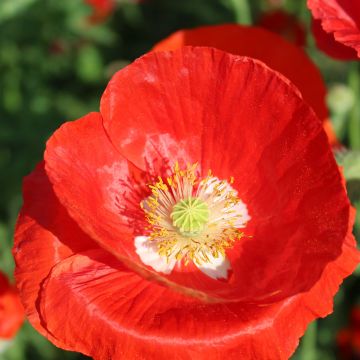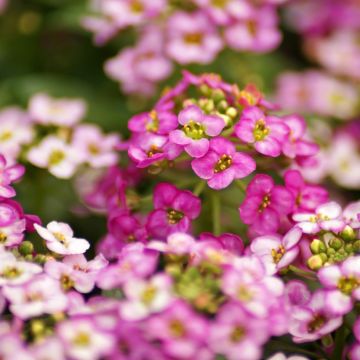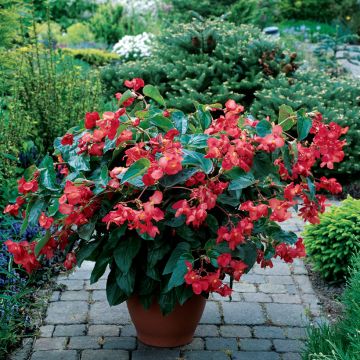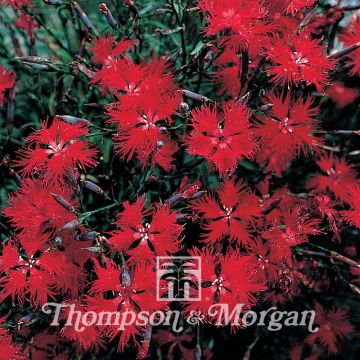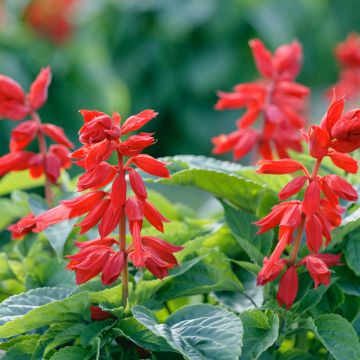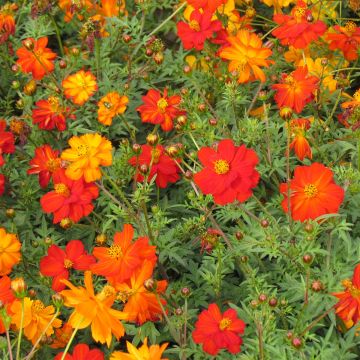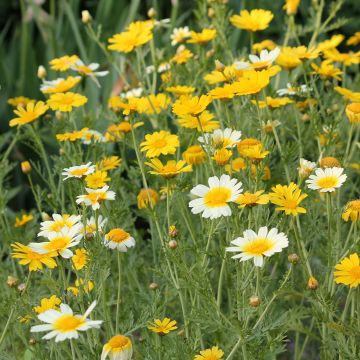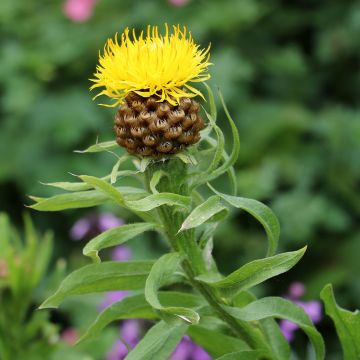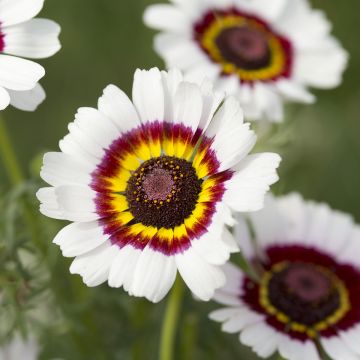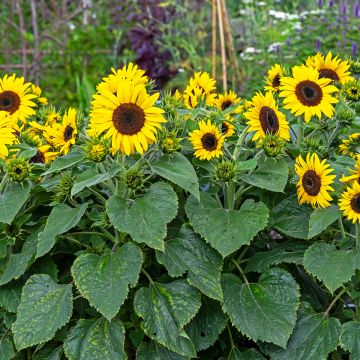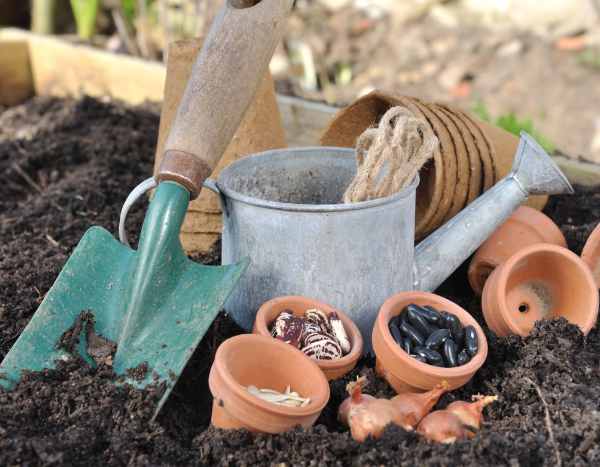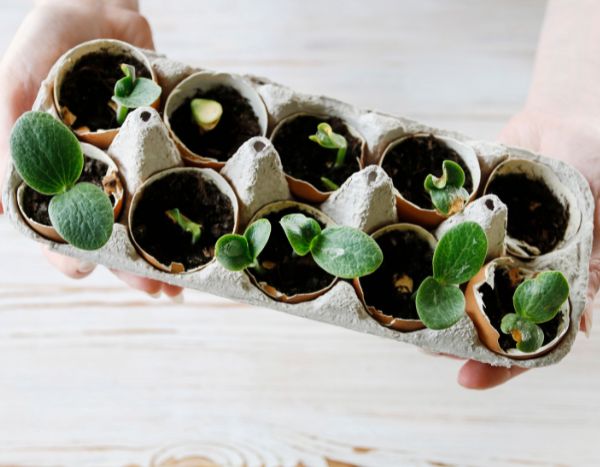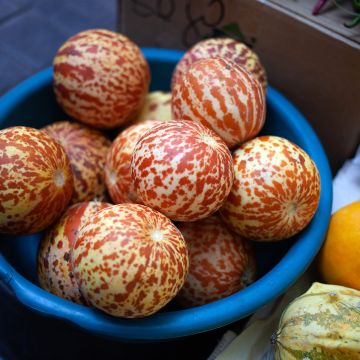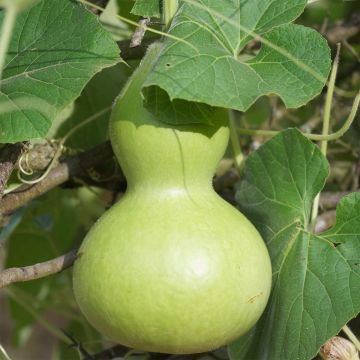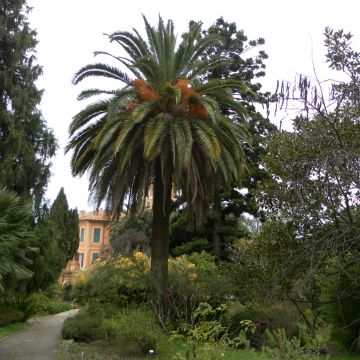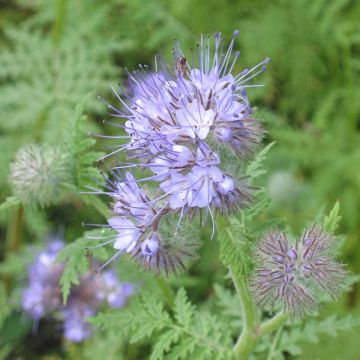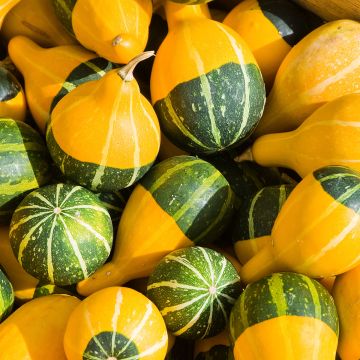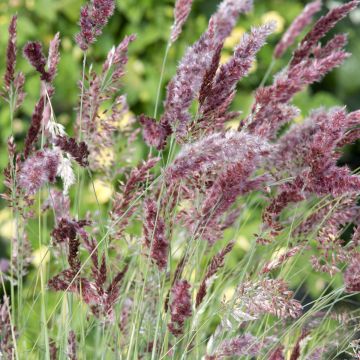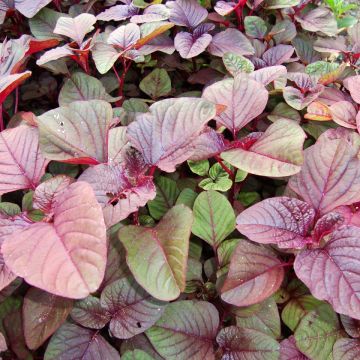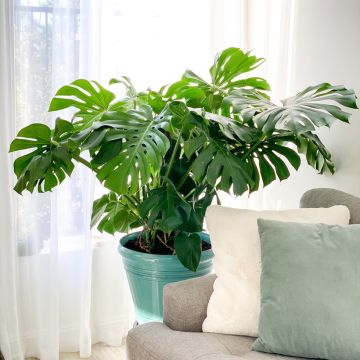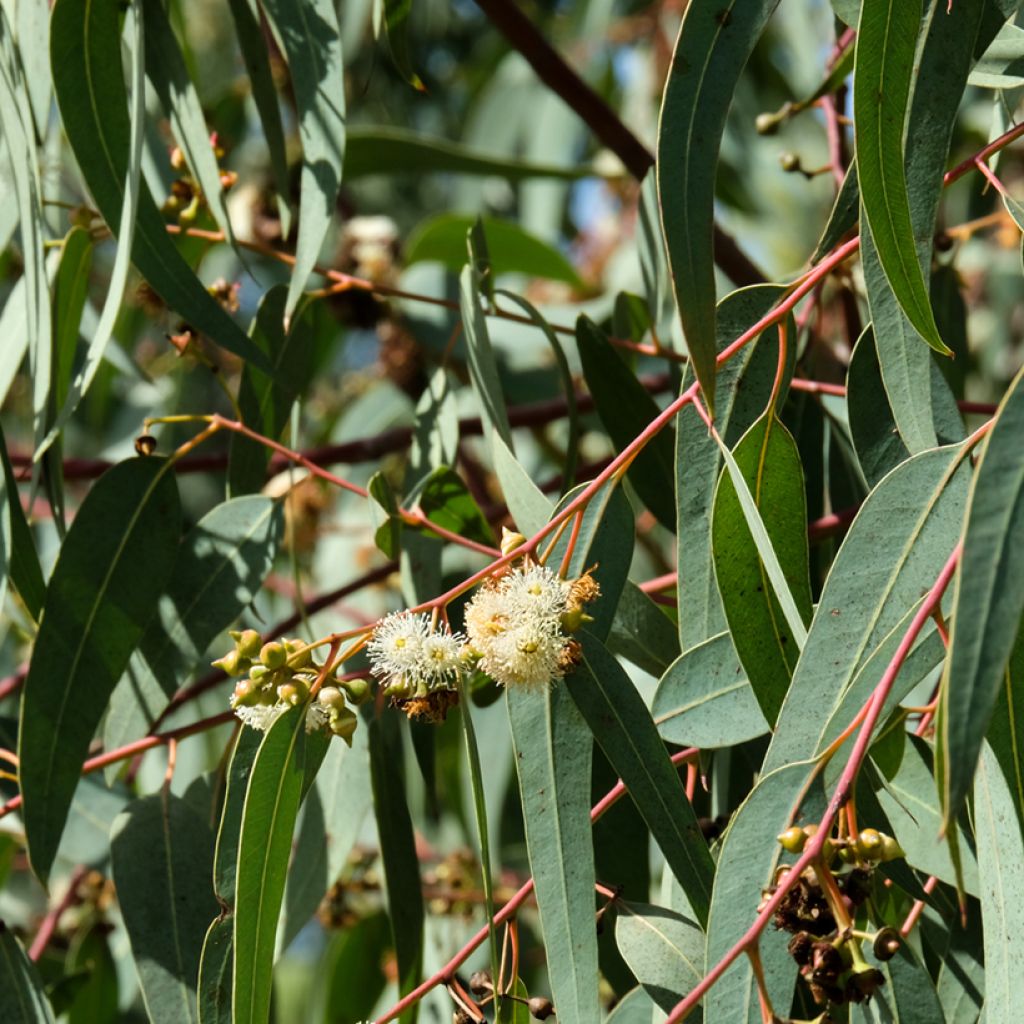

Eucalyptus globulus seeds - Blue gum
Eucalyptus globulus seeds - Blue gum
Eucalyptus globulus
Blue Gum, Southern Blue Gum, Tasmanian Blue Gum
Special offer!
Receive a €20 voucher for any order over €90 (excluding delivery costs, credit notes, and plastic-free options)!
1- Add your favorite plants to your cart.
2- Once you have reached €90, confirm your order (you can even choose the delivery date!).
3- As soon as your order is shipped, you will receive an email containing your voucher code, valid for 3 months (90 days).
Your voucher is unique and can only be used once, for any order with a minimum value of €20, excluding delivery costs.
Can be combined with other current offers, non-divisible and non-refundable.
Home or relay delivery (depending on size and destination)
Schedule delivery date,
and select date in basket
This plant carries a 6 months recovery warranty
More information
We guarantee the quality of our plants for a full growing cycle, and will replace at our expense any plant that fails to recover under normal climatic and planting conditions.
Would this plant suit my garden?
Set up your Plantfit profile →
Description
Eucalyptus globulus, also known as Blue Gum, is one of the most imposing species in the genus and one of the most sought-after for its essential oil. In a Mediterranean climate, by the sea, it quickly reaches an impressive size, forming a beautiful tree in less than 10 years. Its blue-green and decorative juvenile foliage elongates and darkens as it matures. Its creamy-white flowering remains discreet amidst the dense foliage, but its massive trunk is undeniably attractive. This giant thrives best in full sun, in slightly moist but well-drained, non-calcareous or mildly calcareous soils. It makes for a remarkable tree that structures the landscape, reserved for large gardens and parks.
Eucalyptus globulus belongs to the Myrtaceae family. The Eucalyptus genus, mostly native to Australia, comprises over 800 species, including some of the tallest leafy trees in the world, such as Eucalyptus regnans. Eucalyptus globulus is among these giants: in its natural habitat, in south-eastern Australia and Tasmania, it can reach 70 metres in height. Its nickname, Blue Gum, comes from the bluish bloom covering its young leaves. The English call it the "Fever Tree", as it can dry out marshes, thus limiting mosquito proliferation. The species was introduced to southern France in 1860 by botanist Prosper Ramel, where it acclimatised perfectly thanks to mild winters and abundant sunshine. However, its frost tolerance is limited: it can only withstand brief frosts down to around -7°C.
In our southern climates, Blue Gum rarely exceeds 35 metres in height with a 20-metre spread. It displays two types of foliage during its growth. The juvenile foliage consists of ovate, sessile (without a petiole) leaves, 6 to 15 cm long, in a stunning silvery blue. The adult foliage is longer (15 to 30 cm), sickle-shaped, and dark green with a slightly glaucous hue. Its nectar-rich spring flowering often goes unnoticed due to its small size (about 2 cm in diameter), forming creamy-white pompons in the leaf axils. In contrast, its trunk is a true decorative asset: it exfoliates in large patches, revealing smooth bark in varied shades, from beige to cinnamon, including creamy white. There are several subspecies, each with slightly different nuances.
With a rapid growth of 2 metres per year, Eucalyptus globulus can reach 20 metres in just 10 years! This swift development requires careful choice of location, keeping it away from building foundations, as its roots absorb vast amounts of water and may cause long-term issues. Once well-established, it tolerates occasional drought, but its growth remains optimal in sufficiently moist soil.
Eucalyptus globulus is a monumental species, perfect for structuring a vast space while adding a touch of exoticism. Due to its strong competitive ability for water, it is best planted in isolation. However, it can also be paired with other ornamental-leaved trees. For example, with a Gleditsia or Honey Locust. At its base, plant Myrtus communis 'Tarentina' and Liriope, for instance.
Report an error about the product description
Flowering
Foliage
Plant habit
Botanical data
Eucalyptus
globulus
Myrtaceae
Blue Gum, Southern Blue Gum, Tasmanian Blue Gum
Australia
Other Flower seeds A to Z
View all →Planting and care
To successfully germinate Eucalyptus globulus seeds, it is recommended to cold stratify them before sowing. Place the seeds in a moist substrate in the refrigerator for about 4 weeks. Then, in spring, prepare a light and well-draining mixture composed of seed compost and sand. Sow the seeds on the surface without covering them, as they require light to germinate. Keep the substrate consistently moist and maintain a temperature between 20 and 25°C. Germination should occur within 2 to 8 weeks.
Once the seedlings reach 5 to 10 cm in height, transplant them individually into larger pots containing a similar substrate. Place them in full sun and water moderately, allowing the substrate to dry slightly between waterings. When the young plants are sturdy enough, gradually acclimatise them to outdoor conditions before planting them in the ground, ideally at the beginning of summer after the last frosts.
Eucalyptus globulus prefers sunny positions and well-drained, slightly acidic to neutral soils. Although it tolerates periods of drought once established, regular watering promotes optimal growth. Due to its rapid growth, it is advisable to plant it away from structures to avoid any issues related to its root development.
Sowing period
Intended location
Planting & care advice
This item has not been reviewed yet - be the first to leave a review about it.
Similar products
Haven't found what you were looking for?
Hardiness is the lowest winter temperature a plant can endure without suffering serious damage or even dying. However, hardiness is affected by location (a sheltered area, such as a patio), protection (winter cover) and soil type (hardiness is improved by well-drained soil).

Photo Sharing Terms & Conditions
In order to encourage gardeners to interact and share their experiences, Promesse de fleurs offers various media enabling content to be uploaded onto its Site - in particular via the ‘Photo sharing’ module.
The User agrees to refrain from:
- Posting any content that is illegal, prejudicial, insulting, racist, inciteful to hatred, revisionist, contrary to public decency, that infringes on privacy or on the privacy rights of third parties, in particular the publicity rights of persons and goods, intellectual property rights, or the right to privacy.
- Submitting content on behalf of a third party;
- Impersonate the identity of a third party and/or publish any personal information about a third party;
In general, the User undertakes to refrain from any unethical behaviour.
All Content (in particular text, comments, files, images, photos, videos, creative works, etc.), which may be subject to property or intellectual property rights, image or other private rights, shall remain the property of the User, subject to the limited rights granted by the terms of the licence granted by Promesse de fleurs as stated below. Users are at liberty to publish or not to publish such Content on the Site, notably via the ‘Photo Sharing’ facility, and accept that this Content shall be made public and freely accessible, notably on the Internet.
Users further acknowledge, undertake to have ,and guarantee that they hold all necessary rights and permissions to publish such material on the Site, in particular with regard to the legislation in force pertaining to any privacy, property, intellectual property, image, or contractual rights, or rights of any other nature. By publishing such Content on the Site, Users acknowledge accepting full liability as publishers of the Content within the meaning of the law, and grant Promesse de fleurs, free of charge, an inclusive, worldwide licence for the said Content for the entire duration of its publication, including all reproduction, representation, up/downloading, displaying, performing, transmission, and storage rights.
Users also grant permission for their name to be linked to the Content and accept that this link may not always be made available.
By engaging in posting material, Users consent to their Content becoming automatically accessible on the Internet, in particular on other sites and/or blogs and/or web pages of the Promesse de fleurs site, including in particular social pages and the Promesse de fleurs catalogue.
Users may secure the removal of entrusted content free of charge by issuing a simple request via our contact form.
The flowering period indicated on our website applies to countries and regions located in USDA zone 8 (France, the United Kingdom, Ireland, the Netherlands, etc.)
It will vary according to where you live:
- In zones 9 to 10 (Italy, Spain, Greece, etc.), flowering will occur about 2 to 4 weeks earlier.
- In zones 6 to 7 (Germany, Poland, Slovenia, and lower mountainous regions), flowering will be delayed by 2 to 3 weeks.
- In zone 5 (Central Europe, Scandinavia), blooming will be delayed by 3 to 5 weeks.
In temperate climates, pruning of spring-flowering shrubs (forsythia, spireas, etc.) should be done just after flowering.
Pruning of summer-flowering shrubs (Indian Lilac, Perovskia, etc.) can be done in winter or spring.
In cold regions as well as with frost-sensitive plants, avoid pruning too early when severe frosts may still occur.
The planting period indicated on our website applies to countries and regions located in USDA zone 8 (France, United Kingdom, Ireland, Netherlands).
It will vary according to where you live:
- In Mediterranean zones (Marseille, Madrid, Milan, etc.), autumn and winter are the best planting periods.
- In continental zones (Strasbourg, Munich, Vienna, etc.), delay planting by 2 to 3 weeks in spring and bring it forward by 2 to 4 weeks in autumn.
- In mountainous regions (the Alps, Pyrenees, Carpathians, etc.), it is best to plant in late spring (May-June) or late summer (August-September).
The harvesting period indicated on our website applies to countries and regions in USDA zone 8 (France, England, Ireland, the Netherlands).
In colder areas (Scandinavia, Poland, Austria...) fruit and vegetable harvests are likely to be delayed by 3-4 weeks.
In warmer areas (Italy, Spain, Greece, etc.), harvesting will probably take place earlier, depending on weather conditions.
The sowing periods indicated on our website apply to countries and regions within USDA Zone 8 (France, UK, Ireland, Netherlands).
In colder areas (Scandinavia, Poland, Austria...), delay any outdoor sowing by 3-4 weeks, or sow under glass.
In warmer climes (Italy, Spain, Greece, etc.), bring outdoor sowing forward by a few weeks.






























